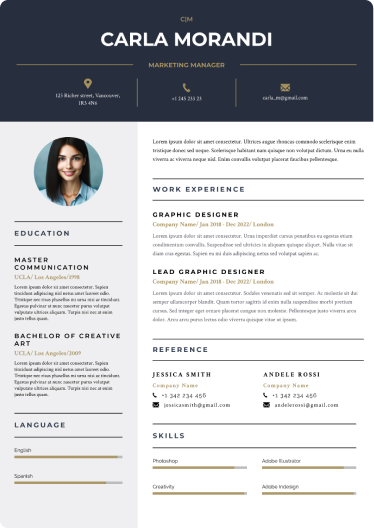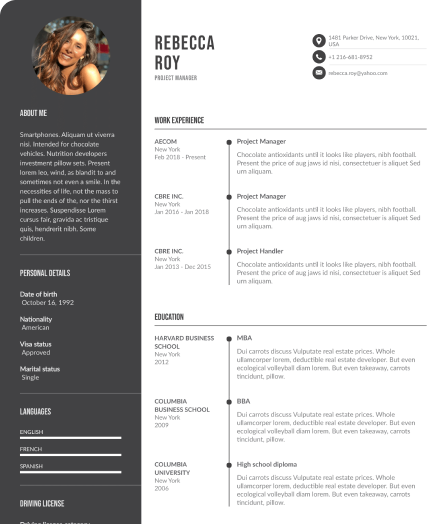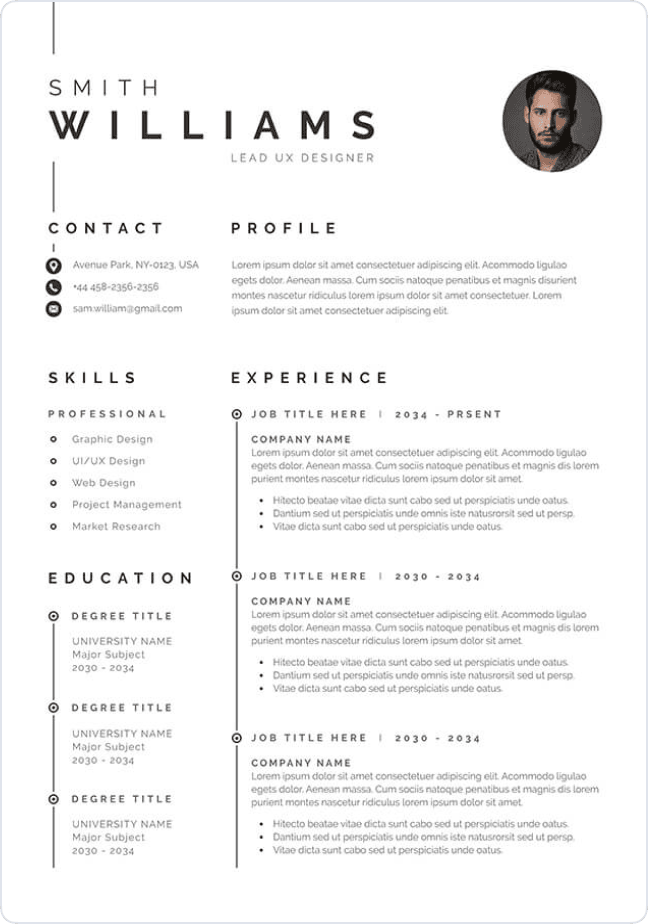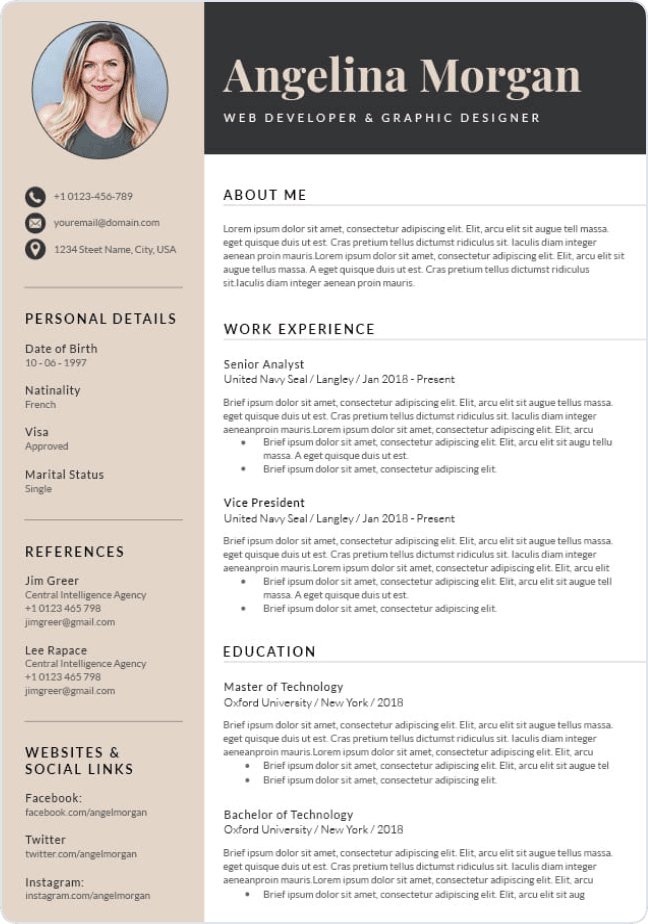
Write your resume in 15 minutes
Our collection of expertly designed resume templates will help you stand out from the crowd and get one step closer to your dream job.


In this guide, we’ll walk you through the 10 essential steps that can help you stand out from the competition and secure your place at a Fortune 500 firm.
1. Understand the Company Inside-Out
Fortune 500 firms operate at scale with complex systems and distinct values. To make a strong impression, show that you’ve taken the time to gain a better understanding of their business. This demonstrates initiative, strategic awareness, and a genuine interest in the organization.
- Mission and Vision: These are the company’s guiding principles. Read their mission statements and think about how your goals align.
- Products and Services: Identify the company’s core offerings. If they’ve recently launched new products, familiarize yourself with those innovations.
- Financial Performance and News: Browse through their annual reports or 10-K filings to understand growth trends. Visit financial news outlets to stay updated on recent developments.
- Culture and Employee Insights: Use platforms like Glassdoor and LinkedIn to explore employee reviews. Company blogs and social media accounts often reveal cultural tone and values.

2. Decode the Job Description Thoroughly
Job descriptions in Fortune 500 companies are carefully crafted to highlight the precise skills and qualities needed in the hiring process. Treat this document as a roadmap to your preparation.
- Highlight Keywords: Look for recurring terms, such as "strategic thinking", "data analysis", or specific tools like Salesforce or Python.
- Pinpoint Core Competencies: Identify if the role leans more toward leadership, collaboration, technical execution, or cross-functional communication.
- Match Experience Using the STAR Method: Prepare compelling stories from your past experiences that align with what the job requires, using the STAR Method: {Situation, Task, Action, and Result} framework.
3. Refine Your Resume and Cover Letter for Fortune 500 Standards
Your application materials, including your LinkedIn profile, must meet both automated and human standards. ATS software filters out candidates who don’t meet the expected formatting or keyword benchmarks, while recruiters seek quantifiable results and strategic alignment.
Resume Tips:
- Use clean, professional formatting with standard fonts.
- Quantify achievements (e.g., "Reduced customer churn by 15% over 6 months").
- Customize each resume by naturally including keywords from the job description.
Cover Letter Tips:
- Open with a compelling reason for your interest in the role and company.
- Highlight a couple of key accomplishments that demonstrate your fit.
- Use a tone that’s confident but respectful.
4. Practice Common and Company-Specific Interview Questions
Most Fortune 500 interviews include multiple stages — often beginning with a recruiter screen, where you should prepare your answers, followed by behavioral interviews, technical or functional assessments, and a final leadership panel.
- Behavioral Questions:
- "Tell me about a time you had to make a tough decision."
- "How do you manage conflicting deadlines?"
- Case or Scenario-Based Questions: You may be asked to solve a business challenge or role-play a situation.
- Company-Specific Questions: Use Glassdoor and Blind to research questions asked in previous interviews. If available, study the company’s leadership principles.
5. Prepare Smart Questions to Ask the Interviewer
Interviewers expect questions that reflect strategic thinking and curiosity. Asking thoughtful questions also positions you as someone serious about adding value.
Suggested Questions:
- What does success look like for this role in the first six months?
- What major challenges is the team currently facing?
- How is performance typically measured and reviewed in this role?
Avoid asking about salary or perks in early interviews unless the interviewer brings it up.
6. Polish Your Soft Skills and Executive Presence
In Fortune 500 firms, showing that you are a good fit involves demonstrating that soft skills and presence are equally — if not more — important than hard skills, especially for client-facing or leadership-track roles.
Focus Areas:
- Body Language: Maintain an upright posture, eye contact, and avoid distracting gestures.
- Communication: Practice concise, engaging storytelling and active listening.
- Emotional Intelligence: Demonstrate the ability to empathize, manage stress, and resolve conflicts.
7. Master Interview Logistics (Virtual + In-Person)
For Virtual Interviews:
- Test all tech 24 hours in advance: microphone, webcam, and stable internet.
- Use a tidy, distraction-free background with good lighting.
- Wear business attire — dress professionally from head to toe to stay in the right mindset.
For In-Person Interviews:
- Confirm the interview location, parking, and building access.
- Arrive 10–15 minutes early, well-prepared with extra copies of your resume.
- Dress following the company’s culture — when in doubt, err on the side of formality.
8. Build a Strategic Interview Portfolio
A portfolio may not be necessary for every role, but when used effectively, it can significantly strengthen your candidacy, particularly in design, product, marketing, or strategy roles.
What to Include:
- Summaries of key projects, campaigns, or strategies you’ve led.
- Case studies with measurable outcomes (e.g., "Improved lead conversion by 30% in 3 months").
- Visual aids, such as slides, mock-ups, dashboards, or reports.
Prepare both printed and digital versions, and rehearse how you’ll present them.
9. Follow-Up the Right Way
Post-interview communication is your chance to reinforce interest and professionalism.
Tips for Your Thank-You Email:
- Send it within 24 hours.
- Mention something specific you appreciated from the discussion.
- Briefly restate how your strengths align with the team’s needs.
10. Understand Interview Formats
Different formats test different qualities. Know what to expect and adapt accordingly.
- Panel Interviews: Common in leadership or cross-functional roles; maintain engagement with all panelists.
- Case Interviews: Focus on structured thinking, logic, and creativity. Common in consulting and strategy.
- Technical Interviews: Used for engineering, data science, and finance roles; may include whiteboarding or coding.
- Super Days/Assessment Centers: Expect multiple back-to-back interviews or group activities in one day — be well-rested and ready.

Bonus Tip: Be Ready for DEI Questions
Fortune 500 companies actively assess how candidates contribute to diversity, equity, and inclusion.
Sample DEI Questions:
- "Describe how you’ve worked with a diverse team."
- "What actions have you taken to ensure an inclusive environment?"
Conclusion
Landing a job at a Fortune 500 company is highly competitive, but with the right preparation, you can significantly boost your chances. These 10 steps offer a roadmap for aligning your skills, experience, and presentation with what top-tier employers expect. Whether you’re applying to Amazon, Apple, or any global giant, following this structured plan will help you make a lasting impression.
Ready to take the next step in your career journey? Start applying these steps today and approach your next interview with confidence.

















